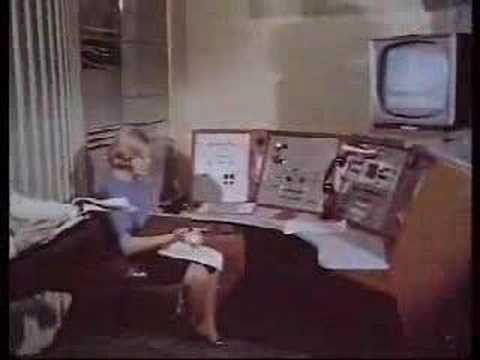

Editing Video In The 60s
On December 1, 2013
- TV History, Viewseum
Ch Ch Ch Changes
Recording and editing video recordings today is NOTHING like it was when the state of the art was 2″ quad machines. Here’s a quick look back in time to the early 60s.
I didn’t do many splicing edits at CBS-Chicago, but we had two blocks, one with a microscope, and one without. We had Editecs, which we used a lot. VR-2000’s side by side, left to right. We had one guy, Al Sauser, who’s arms couldn’t quite reach, who used two rulers to press both play buttons at the same time. This was 1967-1972.
Looking at the video on youtube, I was lead to this set of videos which show the whole history from that point to the computer editing of today .. https://www.youtube.com/watch?v=TIVYeyWHajE
https://www.youtube.com/watch?v=dhHQw5GrwxU
I believe every edit room should still contain a guillotine. You know, just in case an AP gets a little too eager.
Sj…you still have the Ampex splicing block..congrats..what a keepsake. I had to wear cotton cloves..to keep the oil from our fingers & hands off the (BROWN) tape.. KRGV in TX Had an RCA rack mount VTR in a trailer for RMT taping.. & the microscope had two vertical lines where to cut the tape, after we dipped both ends of the into the solution to find the sync pulse..We all had contest as who could make a good edit the quickest.. You could hear the ZING as the splice passed thur the heads…I recall reading that the NBC show LAUGH IN was edited manually…WOW. I still have 12 hours of 2 inch tape to be burned to DVD’s… May give them to the Newseum
I still have my Ampex quad splicing block.
You had to spray first you used a mAgic marker to mark the edit at an Audio cue since you could’ freeze the picture. Then you sprayed iron dust suspended in a volatile liquid on the tape so you could see the edit pulses along the edge so when you made the physical splice the picture didn’t break up. On playback you could hear the edits “zip” as they went across the heads. Head clog?
No problem, just spray some freon into the head assembly as the show continued to roll. Ah those were the days. Loved the 7 second pre-rolls.
I remember when the first two Ampex quad machines were installed at WCAU-TV. Two racks, a bridge and a horizontal deck and lots of tubes. All of the editing was done with a microscope and precision guillotine blade.
Feeling old as dirt here…I remember watching the razor editing process, but I don’t remember any microscope being involved! Is it possible experienced editors could do it without?
Read about this once; never saw it in action. My question is: Who was the target audience for this kind of informational film?
If my memory serves me correctly John Frankenheimer and an editor (whose name escapes me at the moment) were responsible for the first every editing of a video tapes TV show. They used a razor blade after they had a problem with a “live” episode being done at CBS Television City (I can’t remember the name of the show either). Frankenheimer talks about it during the 50th anniversary of the opening of CBS Television City.
….and REAL men didn’t preview their edits!
I started out this way. Now I can edit on my phone. When I try to explain to people how it was done “Old School,” I get blank looks of disbelief.
Before my time, but I forgot about those locking hubs!
My favorite moment is just at the end, after the editor hits the button to engage play on both machines. The sound of the servos bringing both machines up to speed is a real dose of nostalgia.
Wow! But then I’m so old I remember television newscasts on FILM. The crews would scream back to the station about an hour before air time in order to develop, print, and edit the stories for the newscast.
OMG…that’s remarkable…
Just before my time, came in just as CMX and SMPTE code were starting to replace splicing and Editec. I still shudder… 🙂